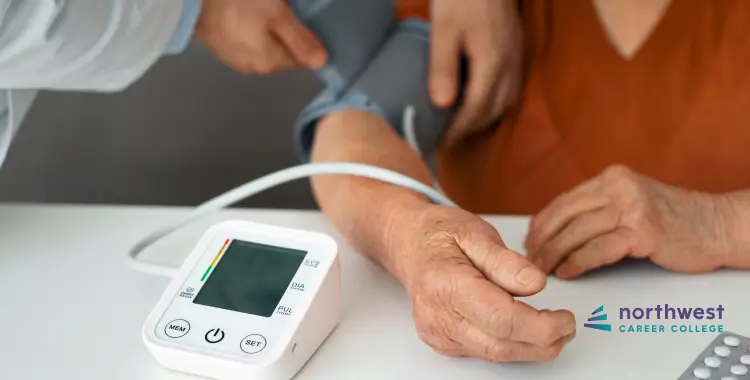New Blood Pressure Tools Medical Assistants Are Using in 2025
- October 31, 2025
- 629 views
- 3 min read
As a medical assistant, checking blood pressure is one of the first and most important things you’ll do when a patient walks into the clinic. Considering the advancement of technology nowadays, the tools you will use for taking blood pressure have also become more advanced. These new blood pressure monitors are faster, more accurate, and easier for you and the patients.

Table of Contents
Why Blood Pressure Monitoring Still Matters
When your blood pressure is too high or too low, it can be a warning sign that something’s wrong, like heart disease, stroke, or other serious health issues. That’s why most doctors ask you to take a patient’s blood pressure at almost every visit.
When taking someone’s blood pressure, you check for normal numbers and watch for warning signs, such as numbers that are too high or too low or jumping around. The numbers you report help the doctor decide what care the patient needs. So, even though it seems like a quick check, it’s an essential part of the patient’s visit.
Smart BP Monitors: What’s New in 2025
Those days are long gone when you had to pump up a cuff and listen with a stethoscope each time. In 2025, most clinics now employ digital cuffs with Bluetooth, touchscreens, and voice. These new blood pressure monitors communicate directly with the clinic’s computer system, meaning the figures are entered into the patient’s record. This saves time and prevents the figures from being scribbled by human hands.
Some Smart BP Monitors can save multiple readings and show patterns over time. Others are hands-free, so all you need to do is place the cuff and press start. These innovative tools help when the clinic is busy and you have many patients to check. They also make it easier to get accurate results, especially when a patient is nervous or moving around.
Wearable Blood Pressure Devices
Today, more patients are walking in with their blood pressure data. Smartwatches and wearable cuffs now track blood pressure at home, work, or even while sleeping. As a medical assistant, you’ll need to know how to review that data and compare it with your office readings.
Wearable blood pressure devices don’t replace the in-clinic blood pressure check; they add extra information. Your job is to check if the numbers match, explain what they mean, and help the patient understand the difference between a smartwatch reading and a professional one. These extra tools help paint a bigger picture of the patient’s health.
Tech Is Helpful—But You Still Need the Basics
Even with all the new technology, you still need to learn to take manual blood pressure. If the digital machine fails or gives an odd number, you’ll need to double-check with the old-school cuff and stethoscope.
You’ll also need to know how to operate, clean, and repair the digital monitors. That’s why hands-on experience and becoming familiar with each machine are essential. Your calm demeanor, clear communication, and precise reporting are just as important as the tools you are working with.
Conclusion
Technology is making your job as a future medical assistant easier, faster, and more accurate, but tools can only do so much. It still takes your eyes, hands, and care to ensure patients get help. Using manual and digital blood pressure tools gives you the confidence to handle any situation. Ultimately, it’s not just about the numbers but about the people you’re helping.
Enroll at Northwest Career College and train to become a skilled Medical Assistant in today’s high-tech healthcare world. You’ll learn the tools, the techniques, and most importantly, the best quality care that makes a real difference.





